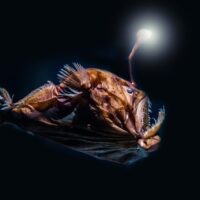- Back to NEWS & VIEWS
- Blogs
- 07/08/2023
Deep-sea mining – into the unknown
Several countries have called for a “precautionary pause” to deep-sea mining until more research into its impacts is complete.
Scientists caution against rush to mine the seabed, and say it could be decades before the full impact on marine life is known
Findings of a recent study in Japan, published in Current Biology, had “large implications” for decision-makers negotiating regulations on proposals for deep-sea mining.
What’s happening? Deep-sea mining, the extraction of valuable metals and minerals from the seabed, has become a topic of intense debate in recent years.
Proponents argue that it holds the key to fulfilling the growing demand for essential elements, such as cobalt and nickel, required for various industries, including the rapidly growing renewables sector and electric vehicles industry.
However, concerns are mounting as scientific studies reveal the detrimental impacts on marine life and ecosystems in the deep sea. Problems arise as the International Seabed Authority (ISA), the governing body commanding the seabed in international waters, is yet to make progress in discussions concerning deep-sea mining regulations.
As the recently agreed UN’s High Seas Treaty does not cover deep-sea mining, it leaves the seabed in international waters unregulated, awaiting the ISA’s decision. Nauru’s application to mine the seabed in 2021 triggered a two-year approval process within the ISA. However, several countries have previously called for a “precautionary pause” to deep-sea mining until more research into its impacts is complete.
Impact on marine life – Marine populations of fish and shrimp have decreased by 43% in areas of the Takuyo-Daigo seamount a year after cobalt was extracted from the seabed, according to a study by Travis Washburn of the Geological Survey of Japan, who said the findings had implications for regulations on deep-sea mining.
Beyond the direct impact zones, the density of fish and shrimp dropped even further, by more than 50%. These findings suggest that the impact of deep-sea mining may be greater and expand further than initially anticipated, affecting marine ecosystems on a broader scale.
Much of the regulatory discussion concerns the rich biodiversity found in the Clarion-Clipperton Zone (CCZ), a remote region in the eastern Pacific Ocean. Polymetallic nodules in the CCZ, which hold valuable metals sought after by mining companies, serve as habitats for various deep-sea creatures.
However, mining these nodules could lead to the loss of numerous unknown and yet-to-be-described species. The consequences of such losses are difficult to predict and may have far-reaching effects on the delicate balance of deep-sea ecosystems.
Into the unknown – As deep-sea mining technology progresses, the full extent of its impact on marine life remains largely unknown. The minerals found in the seabed are essential for everyday devices such as cell phones and cars, as well as renewable technologies.
A concerted effort to reach the goals of the Paris Agreement equates to a quadrupling of mineral requirements for clean energy technologies by 2040. Hitting net zero globally by 2050 will require a six-fold increase in mineral inputs.
However, scientists have cautioned against a rush to mine the seabed, emphasising that it could take decades to fully understand the consequences on marine biodiversity. The complexity of deep-sea ecosystems, with numerous undiscovered species, makes it challenging to predict the long-term effects of mining activities with regulators admitting “humanity knows more about deep space than the deep ocean”.
Regulatory challenge – In 2021, Nauru triggered a two-year rule that obliged the ISA to finalise and adopt regulations for commercial mining by July 2023. Since then, the regulatory process has been turbulent with the head of the ISA accused of “abandoning neutrality” in favour of mining commencing.
Meanwhile, countries called for a “precautionary pause” whilst discussions were ongoing, with various companies including BMW and Volkswagen declaring they would not buy metals mined from the seabed.
Ultimately, the ISA has been unable to reach a consensus on environmental regulations for deep-sea mining in international waters and the deadline has now passed. This failure to agree on rules raises concerns that mining operations, particularly those targeting metals needed for electric vehicles, could proceed without effective safeguards in place, heightening the risks of irreversible damage to deep-sea ecosystems.
What happens now? – Having missed the 9 July deadline, the ISA is technically obligated to accept licensing applications from mining companies. To address a lack of regulation, the ISA held a three-week-long meeting at the end of July. After intense negotiations, the UN body decided it needs more time to determine a regulatory framework.
The body will now work “with a view” to adopting regulations by 2025. The meeting was fraught with geopolitical clashes. Over 20 countries and 37 financial institutions supported a proposal spearheaded by Chile, France and Costa Rica, seeking to impose a precautionary pause on deep-sea mining, a motion which was repeatedly blocked by China.
However, an agreement was reached and the pause will be on the agenda for the next ISA meeting, to be held in 2024. The decisions made over the next two years are crucial for life in our deep seas.
Source: Current Biology
